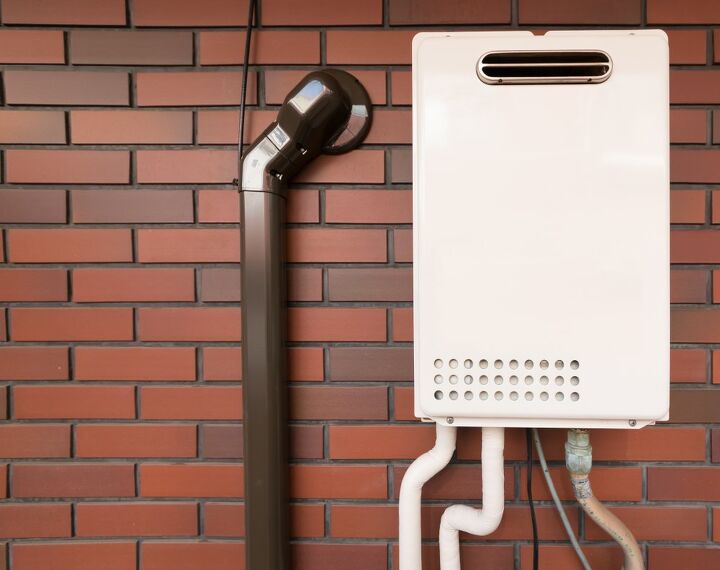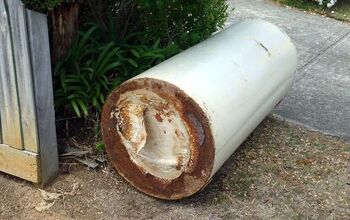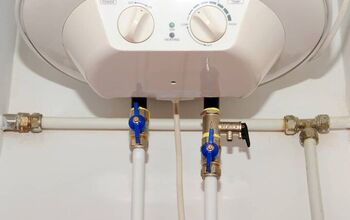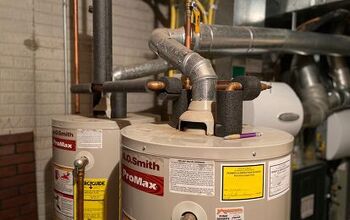Can I Put My Water Heater Outside? (Find Out Now!)

When people get their first home, they almost always notice that the water heater has a singular location: the basement. I mean, that’s great and all, but if you’re like me, you don’t always want to have a big clunky thing inside your home. Many people have wondered if it’s possible to safely install a water heater outside. To find out, we did a little bit of research.
Though it may be rare to see, there are certain situations where you can install a water heater outside of your home. To ensure that you do this properly, you will need a water heater that’s graded for exterior use. Even then, you should still try to have some kind of enclosure to protect it from the elements.
Getting a water heater installed on the outside of your home is daring, to say the least. However, it’s doable in the right situation. It’s all about knowing the details…
Do You Need Water Heater Installation or Replacement?
Get free, zero-commitment quotes from pro contractors near you.

Is It Possible To Put A Water Heater Outside?
Though this wasn’t always the case, it is now very possible to place a water heater on the outside of your home. However, not all water heaters are meant to do this. If you want to have your water heater outside, there are a couple of things you need to be aware of:
- You will need to get an exterior water heater if you want to bring it outside with minimal shelter from the elements. These are usually tankless gas heaters, and they will be specifically marked for exterior use. If you aren’t sure whether a tankless heater is okay for outdoor use, ask a salesperson.
- If you want to bring an electric heater or tanked heater outside, it will need shelter. You may need to make a cabinet just to protect it from the weather and rain. In some cases, this may not even be doable simply because of the requirements your heater may have.
- Always check with your local building codes to see if it’s permitted in your area. In colder climates, having an outside water heater may be against local codes. Moreover, your local laws may also have specific guidelines for the type of heater you’re allowed to use as well as the maximum size for your outdoor water heater.
When Does It Make Sense To Have An Exterior Water Heater?
Honestly, there are very few moments where an exterior water heater is the best course of action for you to take. However, there are still some moments where it could make sense. If you are very “hard up” for space in your home, moving your water heater outside might be a smart move. On a similar note, you should only consider this if you live in a warm climate.
Ideally, you will only use your exterior water heater as an auxiliary water heater for a larger setup. After all, these can be a little unreliable at times.
Why Shouldn’t You Move Your Water Heater Outside In Colder Regions?
Water heaters have a hard time with keeping heat inside their bodies when they are indoors. The more heat loss they experience, the harder they have to work to provide you with the hot water that you want. This drives up the cost of electricity (or gas). It can also put a strain on your water heater.
Sure, you might be able to keep some of the heat inside with a water heater blanket, but there’s only so much that can do. Moreover, you also may end up with additional wear and tear, simply because the fluctuations in weather can expose your heater to corrosion.
Related Guide: Are Water Heater Blankets Worth It?
Do All Exterior Water Heaters Need Shelter From The Elements?
If you want to bring a tanked water heater outside, shelter is absolutely necessary. It’s the only way to make sure that your water heater doesn’t get exposed to the elements and that errant branches from strong winds won’t hit it. Most professionals will buy a small cabin or shed to add to the side of the home.
However, if you have an exterior water heater, you might not need one. Even if you don’t *need* one, most installers will suggest that you get one just to keep your water heater safe. This is doubly true when it comes to area where vandalism is common. After all, a vandal who has it out for you could potentially tamper with your water heater if it’s on the outside of your home.
Do You Need Water Heater Installation or Replacement?
Get free, zero-commitment quotes from pro contractors near you.

Related Questions
Are there any guidelines on where you can place an exterior water heater?
There are, but the specifics of your water heater’s placement can vary from place to place. The biggest rules that you have to be aware of is that you cannot have your exterior water heater too close to any doors or windows. It’s also a good idea to avoid having your water heater too close to electric lines or tree branches—especially if you are in an area that is prone to wildfires.
How much does it cost to move your water heater outside?
Along with multiple plumbing modifications that can cost upwards of $5,000, you will need to spend a minimum of $500 to create a housing and an additional $700 for the installation of the exterior water heater. How many plumbing modifications you will need will depend on your home as well as local building codes. If you want to make sure that you get your water heater installed outside fast, you should start saving up as soon as you can.
What happens if you use an indoor tankless water heater outside?
If you have it sheltered in a shed, not much. If you leave it exposed to the elements, then you might want to brace yourself. This installation will void your warranty and dramatically shorten the lifespan of your water heater. In many cases, you won’t get effective water heating by using the wrong heater. Though rare, using an indoor water heater outside can also cause damage to your plumbing or home exterior.

Ossiana Tepfenhart is an expert writer, focusing on interior design and general home tips. Writing is her life, and it's what she does best. Her interests include art and real estate investments.
More by Ossiana Tepfenhart



























